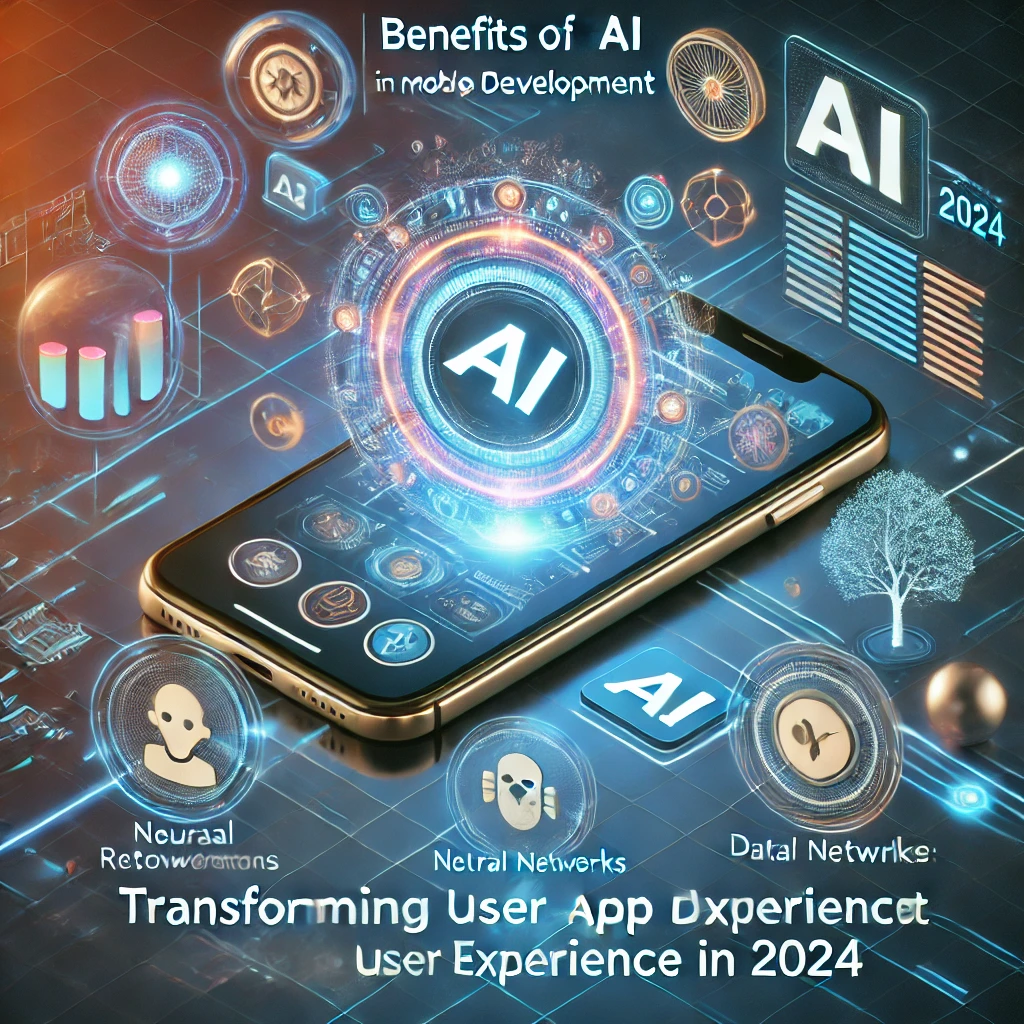
Cloud computing has revolutionized the way I engage with big data, allowing me to derive valuable insights that shape your business strategies. As I explore this vast landscape, I see firsthand how leveraging big data in the cloud can enhance decision-making, optimize operations, and foster innovation. However, it’s critical to navigate potential challenges, such as data security issues and compliance risks, to fully capitalize on this transformative technology. In this post, I will guide you through the powerful ways that big data in the cloud can redefine your business’s future.
Understanding Big Data
Definition of Big Data
The digital revolution has paved the way for what we now term Big Data. One can define Big Data as the vast quantities of structured and unstructured information that are generated every second from a myriad of sources. This data is so extensive and complex that traditional data processing software cannot manage it efficiently. It includes everything from social media interactions and online transactions to sensor data collected from IoT devices. Understanding this definition is crucial, as it sets the stage for grasping how we can leverage this wealth of information in business strategies.
Another critical aspect of Big Data’s definition lies in its implications. As I navigate through the complexities of Big Data, I realize it’s not just about volume; it’s also about the velocity at which data is generated and the variety of data types involved. This convergence of factors creates a unique challenge but also opens doors to innovative strategies for extracting actionable insights.
Characteristics of Big Data
On my journey to understand Big Data, I’ve identified a few inherent characteristics that define it: volume, velocity, and variety. Volume refers to the massive amounts of data that organizations generate daily, while velocity indicates the speed at which this data is being generated and processed. Finally, variety highlights the different forms of data we encounter, including text, images, videos, and audio.
Furthermore, embracing these characteristics means preparing to tackle the challenges they present. I’ve come to realize that veracity (the trustworthiness of data) and value (the insights that can be derived from it) are also equally critical factors. As organizations, we must work diligently to ensure that we not only collect data efficiently but also extract meaningful value while navigating the complexities introduced by its dynamic nature.
Definition of Big Data characteristics provides a broader understanding of its implications in decision-making processes. In knowing these traits, we can better strategize how to employ Big Data for our business advantage.
Sources of Big Data
Understanding Big Data sources is pivotal for any business venturing into data analytics. You’ll find that these sources abound in our digital-first world, encompassing anything from social media platforms, production line sensors, mobile devices, and transactional databases to email communications. This wide array means that data is constantly flowing into organizations, offering them a precious resource for insight generation.
Additionally, recognizing the diverse origins of your data can empower your business decisions. You should be aware that different sources yield different types of data. For instance, while social media may provide qualitative sentiment analysis, transactional records can furnish quantitative metrics necessary for making sound financial decisions.
Data generation continues to expand exponentially, influenced by technological advancements and the integration of more devices into our daily lives. By staying attuned to these sources, I can help drive your strategic initiatives, ensuring you tap into the full potential of Big Data for enhanced business outcomes.
The Cloud Revolution
Even in our highly interconnected world today, the shift towards cloud computing has revolutionized how businesses operate and manage their data. This transformation is not just a technological upgrade; it is a complete rethinking of how businesses can leverage data in innovative ways. As organizations embrace this change, they open themselves up to a myriad of strategies that can significantly improve their performance, agility, and ability to respond to market demands.
What is Cloud Computing?
Any definition of cloud computing embodies the essence of on-demand access to a shared pool of configurable computing resources that can be rapidly provisioned with minimal management effort. In practical terms, this means that you can store and process data on servers that are accessible over the internet, rather than relying solely on local servers or personal computers. This fundamentally alters the way businesses think about their IT infrastructure, offering flexibility and scalability to meet their operational needs without substantial upfront investments.
In simpler terms, cloud computing allows you to utilize services such as storage, computing power, and analytics through the internet, effectively letting you scale your capabilities as your business grows. It empowers you to access your data from anywhere, at any time, enabling you to make timely decisions backed by real-time information. The operational advantages of the cloud are profound, and they form the backbone of strategies aimed at leveraging big data for business success.
Benefits of Cloud Computing for Big Data
Cloud technology fundamentally changes how we approach big data by offering scalable resources and advanced analytics tools that can process large volumes of information efficiently. Cloud computing allows you to access vast amounts of data quickly, which is crucial for any data-driven strategy. With pay-as-you-go pricing models, you only pay for the resources you actually use, leading to significant cost savings, especially for businesses that may not need constant high levels of computing power.
The ability to process and analyze big data in real-time is a game-changer. You can gain insights that would have previously taken days or weeks, allowing for more informed decision-making and a quicker response to changing market dynamics. This agility is necessary in today’s business landscape, where being first can provide a competitive edge. With the right cloud strategies in place, you can derive actionable insights from your data as it streams in, turning data into your most powerful asset.
Cloud Deployment Models
Cloud computing can be deployed in several distinct ways, predominantly categorized into three models: public, private, and hybrid cloud. Each model offers unique advantages and drawbacks, allowing you to choose based on your specific business requirements, security preferences, and budget constraints. A public cloud is typically managed by third-party providers and offers resources available to multiple clients, potentially leading to cost efficiency, while a private cloud provides dedicated resources for a single organization, often enhancing security at a higher price.
The hybrid model combines elements of both public and private clouds, giving you the flexibility to operate sensitive workloads in a private environment while still benefiting from the scalability of public resources. This versatility ensures that regardless of your organization’s size or industry, there is a cloud deployment model tailored to your needs.
Plus, understanding these cloud deployment models is crucial for making informed decisions about your data strategy. Choosing the right model can impact not only your costs and resources but also your project’s overall success and security. Each model possesses different levels of control and customization, making it vital to evaluate your individual business objectives to select the most suitable deployment approach.
Data Analysis Techniques
All businesses have vast amounts of data at their disposal, but simply having access to this information is not enough. To truly benefit from Big Data, companies need to employ effective data analysis techniques that can help convert raw data into actionable insights. In this chapter, I will explore three key techniques: data mining, predictive analytics, and machine learning applications, each bringing its own unique advantages to transform your business strategies in the cloud.
Data Mining
One of the most fundamental methods for extracting valuable insights from your data is through data mining. This process involves a range of techniques designed to uncover patterns and relationships within large datasets. For instance, I identify trends, relationships, and anomalies that can inform decision-making, revealing insights that were previously hidden. Utilizing various algorithms, I can segment data into meaningful categories, allowing organizations to tailor their marketing strategies or optimize operational efficiencies.
Moreover, data mining leverages both unstructured and structured data to provide a comprehensive view of customer behaviors and preferences. By utilizing clustering, association rule learning, and regression techniques, you can discover valuable information about your target markets and enhance your product offerings. This approach not only helps in identifying existing opportunities but can also forecast potential challenges your business may face in the future.
Predictive Analytics
Data analysis takes a forward-looking approach with predictive analytics, which uses historical data to forecast future outcomes. By applying sophisticated statistical algorithms and models, I’m able to help businesses identify trends and patterns that can inform strategic planning. This technique may involve using variables such as customer behavior, market conditions, or economic indicators to generate insights that guide marketing and operational strategies.
Plus, understanding the effectiveness of predictive analytics can lead you to make informed decisions based on data-backed forecasts. For instance, you might anticipate customer demand fluctuations, allowing you to allocate resources more effectively and optimize inventory levels. By combining past data with your business intelligence capabilities, I help you stay ahead of the competition by proactively addressing potential risks and opportunities.
Machine Learning Applications
One of the more innovative approaches to data analysis is through machine learning applications. This subset of artificial intelligence involves algorithms that improve automatically through experience and data intake. I find that by utilizing machine learning, businesses can automate processes, enhance decision-making, and even provide personalized experiences for customers. By learning from patterns in historical data, machine learning systems can make predictions or recommendations based on real-time data inputs.
Techniques used in machine learning applications include supervised learning, unsupervised learning, and reinforcement learning, each serving different functions like classification, clustering, and optimization problems. This flexibility allows you to leverage machine learning across various business sectors, whether it’s for improving customer service through chatbots, detecting fraud in transactions, or personalizing content for your audience. As you incorporate these advanced techniques, the possibilities for innovation and efficiency become virtually limitless.
Transforming Business Strategies
Despite the rapid evolution of technology, I have observed that many businesses are still grappling with how to effectively utilize big data to refine their strategies. The emergence of cloud computing has provided an unprecedented opportunity to not just store but also analyze vast amounts of data efficiently. By leveraging tools and technologies available in the cloud, you can unlock key insights that can be transformative for your business.
Customer Insights and Personalization
An necessary aspect of transforming your business strategy involves understanding your customers at a deeper level. The power of big data allows you to gather substantial information about customer preferences, behaviors, and demographics. This information will enable you to create tailored marketing campaigns that resonate with your target audience, thus driving customer loyalty and increasing conversion rates. When you truly understand your audience, you’re in a position to offer them personalized experiences that keep them coming back.
Moreover, as you probe into customer insights, I have found that the ability to predict future needs is one of the most powerful tools at your disposal. Through analyzing past purchase history and browsing behavior, I can help you anticipate what products or services your customers might want next. This proactive approach not only enhances customer satisfaction but also positions your business as a forward-thinking leader in your industry.
Operational Efficiency Improvements
Insights generated from big data can significantly improve operational efficiency across various functions within your business. By analyzing data from different departments, I can identify bottlenecks and inefficiencies that are costing you time and money. With the right data-driven strategies, you can streamline processes, reduce waste, and ultimately improve your overall operational performance.
Plus, with the implementation of cloud-based analytics tools, you gain **real-time visibility** into your operations. This enhanced visibility empowers you to make informed decisions quickly, ensuring that your business remains agile in an ever-changing marketplace. The ability to react promptly to operational challenges can be the difference between maintaining **competitive advantage** and falling behind.
Product and Service Innovation
Product innovation is another vital area where big data plays a transformative role. Leveraging insights derived from market trends, I can help you identify new opportunities for product development. Understanding what consumers are looking for or what gaps exist in the market allows you to innovate effectively, ensuring that your offerings remain relevant and in-demand.
Additionally, service innovation is just as crucial. By gathering feedback and analyzing service interactions, you can pinpoint areas for improvement, leading to increased satisfaction and retention. Having data-driven insights allows you to adapt your services more effectively to customer needs, thereby fostering a culture of continuous improvement.
Efficiency in your product and service innovation strategies is paramount. I realize that staying ahead in today’s fast-paced business environment requires not just **incremental improvements**, but **disruptive innovations** that can redefine your industry standards. By consistently analyzing market and customer data, you will ensure that your innovations are not only timely but also impactful, maximizing your business growth potential.
Challenges in Big Data and Cloud Integration
To successfully navigate the landscape of Big Data and cloud integration, one must confront a myriad of challenges. These encompass a range of issues from data privacy and compliance to talent acquisition and skill gaps. It is crucial for organizations to not only recognize these challenges but also formulate strategies to effectively address them. In this chapter, I will examine into some of the most significant hurdles that organizations face when attempting to integrate Big Data within the cloud.
Data Privacy and Compliance Issues
Data privacy and compliance have emerged as pressing concerns for organizations utilizing Big Data in the cloud. With stringent regulations such as the General Data Protection Regulation (GDPR) and various industry-specific guidelines, you must ensure that your data practices are compliant. Failing to adhere to these regulations can result in hefty fines and damage to your organization’s reputation. I understand that navigating the murky waters of compliance can be daunting, but proactive measures such as implementing strong data governance frameworks can significantly mitigate these risks.
Moreover, data breaches and unauthorized access to sensitive information pose another layer of complexity. Ensuring that your cloud service providers have robust security protocols in place is imperative. You must not only evaluate the security measures of your cloud platform but also conduct regular audits to verify that your data remains protected. By taking these precautions, you can build confidence in your cloud strategy while safeguarding your organization against potential threats.
Data Quality and Management
The management of data quality is another vital challenge encountered during Big Data integration in the cloud. Ensuring that data is accurate, consistent, and timely can often feel like a herculean task, especially in dynamic environments where data is continually generated and processed. I frequently emphasize the importance of establishing clear data quality standards and automated validation processes. This rigorous management approach can help you avoid making decisions based on poor-quality data, which could lead to costly mistakes or misaligned strategies.
A well-defined data governance framework becomes imperative in addressing data quality issues. Your organization must prioritize the implementation of automated data cleansing and enrichment processes. By doing so, you can ensure that only the highest quality data feeds into your analytics tools, enabling you to draw accurate insights and make informed decisions.
Skills Gap and Talent Acquisition
Data-driven organizations face a significant challenge when it comes to closing the skills gap in analytics and data science. As I explore the integration of Big Data in the cloud, it becomes clear that many organizations struggle to find skilled professionals proficient in both data analysis and cloud technologies. This gap can hinder your ability to leverage the full potential of your data, making it imperative for organizations to invest in training and upskilling their existing workforce.
Additionally, attracting talent with the necessary skill sets has become increasingly competitive. As the demand for data scientists and data engineers surges, organizations must think creatively about their talent acquisition strategies. I believe that expanding your recruiting efforts to include diverse sources, such as coding boot camps and online learning platforms, can lead to discovering untapped potential in the job market.
Cloud-based solutions often require specialized knowledge that may not be readily available in your current workforce. This makes it imperative for organizations to provide ongoing training and development opportunities to remain competitive. By fostering a culture of continuous learning, you can help ensure that your team stays abreast of the latest advancements, methodologies, and tools within the Big Data and cloud landscape.
Future Trends in Big Data and Cloud Strategies
Once again, we find ourselves at a pivotal moment in the evolution of Big Data and cloud technologies. As I reflect on the landscape, it is evident that the interplay of these domains will profoundly shape how businesses formulate their strategies moving forward. The upcoming trends signal a fundamental shift in operations, decision-making, and competitive advantages, driven by insights derived from vast data sets stored and processed in the cloud.
The Role of Artificial Intelligence
Cloud technology acts as the foundation upon which Artificial Intelligence (AI) is built. I see a growing reliance on AI to enhance data analytics, automate workflows, and provide predictive insights that can drive strategic decisions. With machine learning algorithms becoming increasingly sophisticated, you can expect transformative changes in how businesses interpret data. This integration of AI and cloud services will enable organizations to glean deeper insights and respond to market dynamics more swiftly than ever before.
As you harness AI capabilities, it’s crucial to understand that they won’t merely replace existing processes but will enhance them, leading to greater efficiency and improved decision-making. For instance, AI-powered analytics can sift through colossal data sets in real-time, uncovering patterns and trends that would otherwise go unnoticed. This dual power of cloud infrastructure and AI creates a fertile ground for innovative business strategies.
Edge Computing Innovations
Future developments in edge computing promise to revolutionize how organizations process and utilize data. By decentralizing data processing and bringing it closer to the source, you can minimize latency and optimize performance. This approach is particularly beneficial for industries requiring immediate data analysis, such as healthcare and manufacturing. I foresee companies leveraging edge computing to not only enhance operational efficiency but also to reduce bandwidth costs associated with moving large data sets to the cloud.
Intelligence plays a crucial role in the success of edge computing innovations. By enabling data processing at the edge, organizations can quickly respond to local demands, thus increasing operational agility. This capability allows you to capture and analyze data on-site, be it from IoT devices or local sensors, significantly reducing the time taken to act on that information. The implications for real-time insights are enormous, as businesses can optimize their resource allocation and react to changes almost instantaneously.
The Rise of Real-Time Data Processing
Data is becoming increasingly crucial in the business strategy arena, especially as the demand for real-time data processing skyrockets. In my observations, businesses that implement real-time analytics can significantly enhance their response times and decision-making capabilities. With technologies focused on streaming analytics, organizations can now process data as it comes in, rather than relying solely on batch processing. This shift results in a decisive competitive edge, allowing you to act swiftly in a fast-paced market.
As I dive deeper into this trend, it’s clear that the rise of real-time data processing is establishing a new normative in business operations. The ability to access up-to-the-minute information can lead to enhanced customer experiences, proactive risk management, and data-driven forecasting. For instance, companies in retail can track consumer behavior instantly, allowing them to tailor offerings in real time. As we continue on this path, it’s imperative to recognize how crucial real-time capabilities are for sustaining growth and competitive advantage.
Summing up
Considering all points, it becomes evident that big data is not just a trend; it is a transformative force shaping business strategies in the cloud. I have observed that organizations leveraging big data analytics can unlock valuable insights that drive decision-making processes. These insights empower you to identify market trends, understand customer behavior, and optimize operations in real-time. The integration of cloud technology further enhances this capability, enabling you to store, process, and analyze vast amounts of data seamlessly, reducing costs and freeing up resources that can be better spent elsewhere.
As your business navigates through an increasingly data-driven landscape, embracing big data within cloud environments is no longer optional but necessary. I encourage you to adopt this paradigm shift to not only enhance your competitive edge but also to foster innovations that can adapt to rapidly changing market demands. By leveraging big data effectively, you position yourself to make informed strategic decisions, ultimately leading to sustainable business growth and success in the long run.








